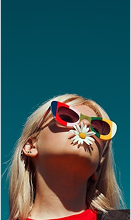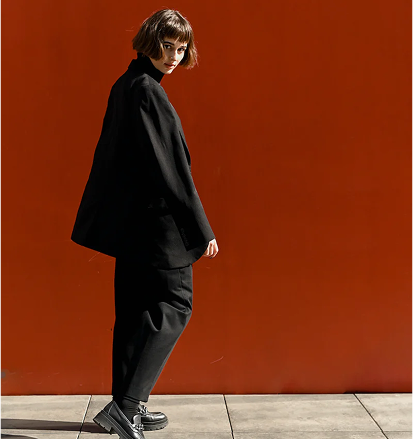Ever grabbed a shirt and wondered why some collars look sharp while others fall flat? Understanding shirt collar types changes how you dress and boosts your confidence instantly.
Your collar isn’t just a detail – it’s the frame for your face and the foundation of your entire outfit.
From casual button-downs to formal spread collars, each style has a purpose and sends a message. For job interviews, weddings, or brunch, selecting the right collar matters.
You’ll find everything you need to know about shirt collar types to help you look your best every single day.
Why Collar Type Matters?
Your shirt collar does more than just frame your face – it sets the tone for your entire outfit.
The right collar works with your tie knot, if you’re wearing a slim four-in-hand or a bold Windsor. It also signals formality, from relaxed button-downs for weekend wear to crisp spread collars for business meetings.
Beyond style, your collar choice should complement your face shape and neck size to create balance.
Collar structure matters too, with stiffer collars using stays for a sharp look and softer collars offering casual comfort. Each collar type carries cultural and stylistic meaning that speaks volumes before you say a word.
Collar Type Classification
Not all shirt collars are created equal. Understanding the main collar categories helps you steer style choices and find designs that match your wardrobe needs.
| CATEGORY | CORE FEATURE | TYPICAL USE |
|---|---|---|
| Turn‑Down Collars | Fold over, often with pointed tips | Business, dress shirts, smart casual looks |
| Stand Collars | Upright band, no fold‑down leaf | Minimalist, ethnic styles, casual wear |
| Formal Collars | Decorative, structured, or vintage | Formalwear, statement fashion, retro styles |
| Casual Collars | Relaxed or open necklines | Resort wear, fashion‑forward casual outfits |
Each category serves different style purposes and occasions. Once you understand these basic classifications, choosing the right shirt collar becomes much easier and more intuitive for any event on your calendar.
Different Types of Shirt Collars
Each collar type has unique features that affect how your shirt looks and feels. Knowing these distinctions helps you choose collars that complement your face shape, work with your ties, and suit different occasions perfectly.
1. Point (Straight) Collar

The point collar is one of the most common and classic types of shirt collars. It has long, narrow points that angle down toward the chest.
Because of its neat shape, it’s ideal for work, formal events, or settings requiring a sharp but subtle look. It pairs well with ties and fits under suit jackets, making it a safe choice if you’re unsure about collar options.
Styling Tip: Pair with a four-in-hand or half-Windsor tie and keep it tucked under your lapels.
2. Spread Collar

The spread collar has its points set wider apart than the point collar. This wider opening allows more room to show off your tie knot. It gives a clean and modern look and is popular in dress shirts for business or formal wear.
The spread collar works best on people with narrow or oval faces, as it balances out the shape. It looks great with larger tie knots and sharp suits.
Styling Tip: Try it with a full Windsor knot for a bold, polished appearance.
3. Semi‑Spread Collar
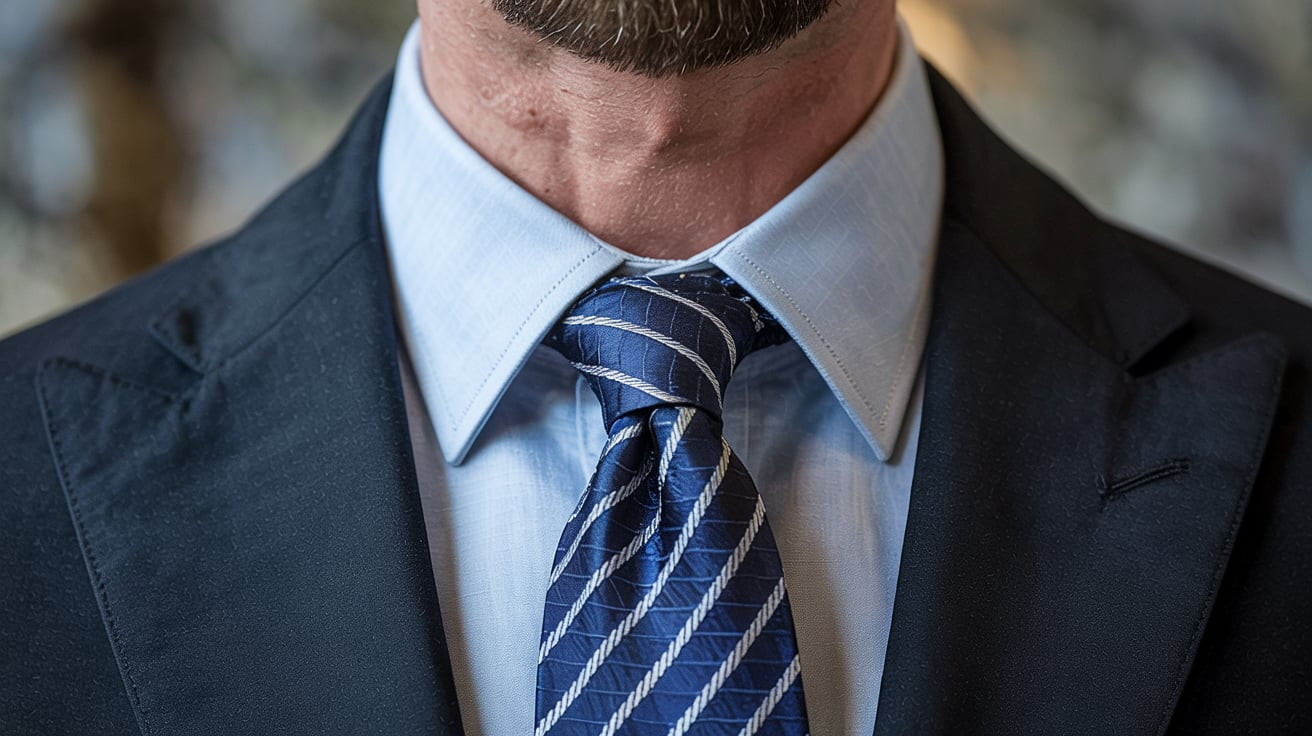
The semi-spread collar sits between a point collar and a full spread collar. It has a moderate distance between the tips, making it a good fit for most face shapes.
This collar works well with many tie knots and is great if you want something that’s neither too classic nor too trendy. It’s ideal for everyday work shirts and can easily shift between formal and smart casual looks.
Styling Tip: Match it with a medium knot like the half-Windsor for a balanced look.
4. Cutaway/Extreme Cutaway Collar
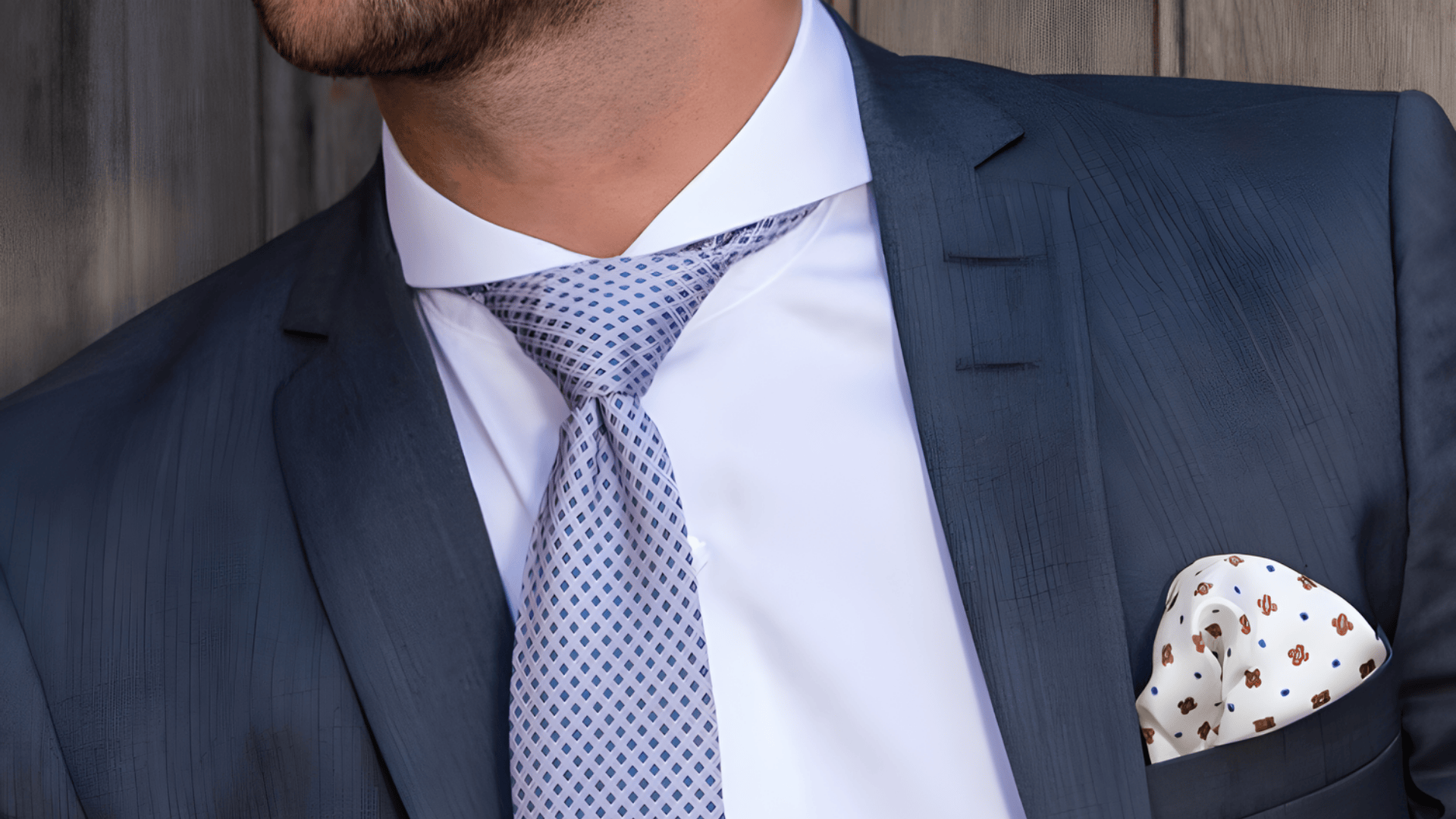
The cutaway collar has points that angle sharply outward, creating a wide opening at the neck. In the extreme version, the tips almost point toward your shoulders.
This collar is eye-catching and works well when you want to make a bold impression. It’s perfect for modern suits and larger tie knots, but not the best for narrow faces. If you want to skip the tie, it still looks stylish under a blazer.
Styling Tip: Pair with a full Windsor knot or leave open under a jacket.
5. Button‑Down Collar
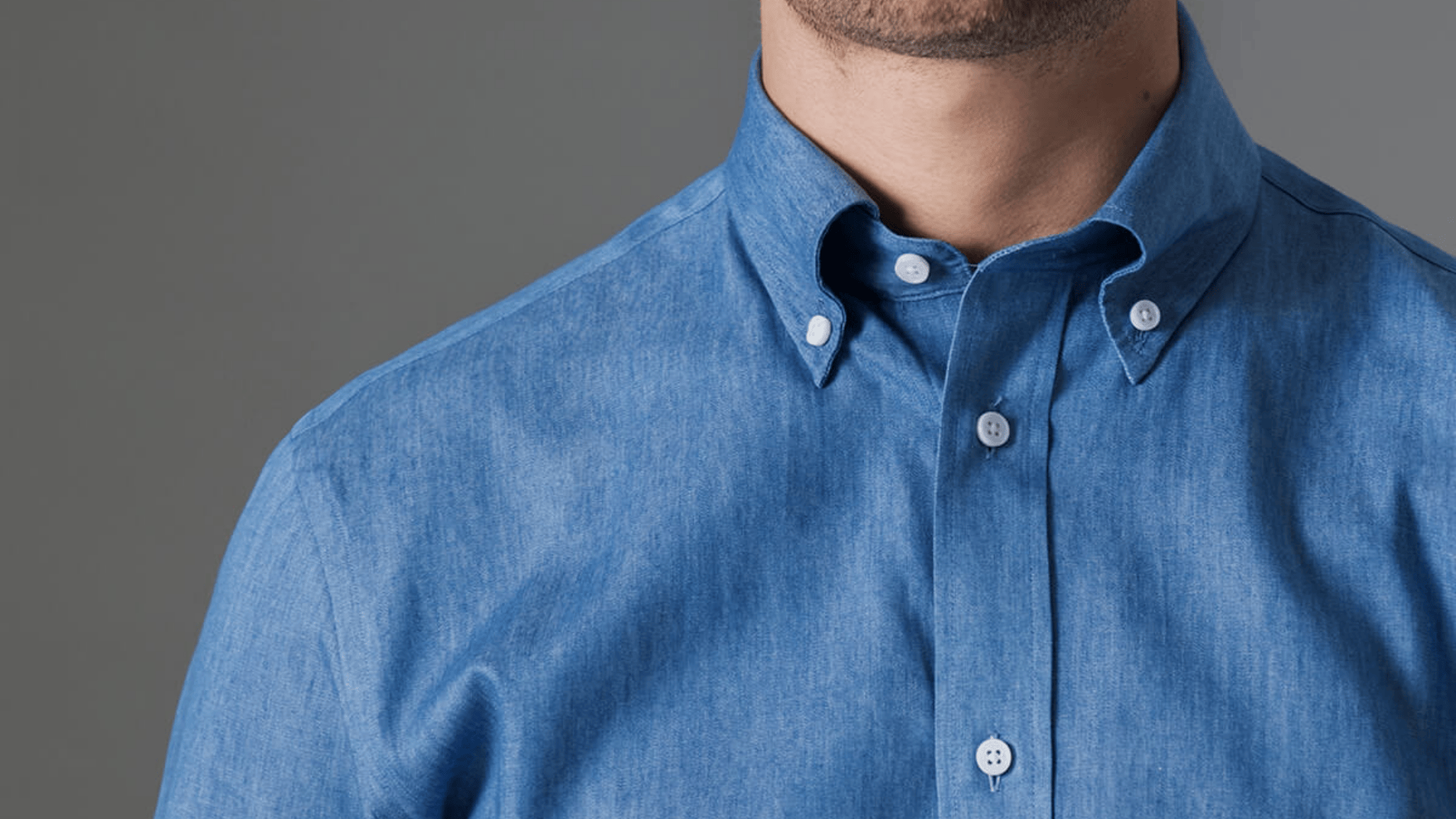
The button-down collar has small buttons that fasten the collar tips to the shirt. Originally made for sports, it now fits well in both casual and business casual settings.
It’s less formal than other collars but stays neatly in place, even without a tie. It’s a good option for Oxford shirts or relaxed workdays. Avoid it for black-tie events, though – it’s more laid-back by design.
Styling Tip: Wear it open for a casual look or with a slim tie for work.
6. Tab Collar
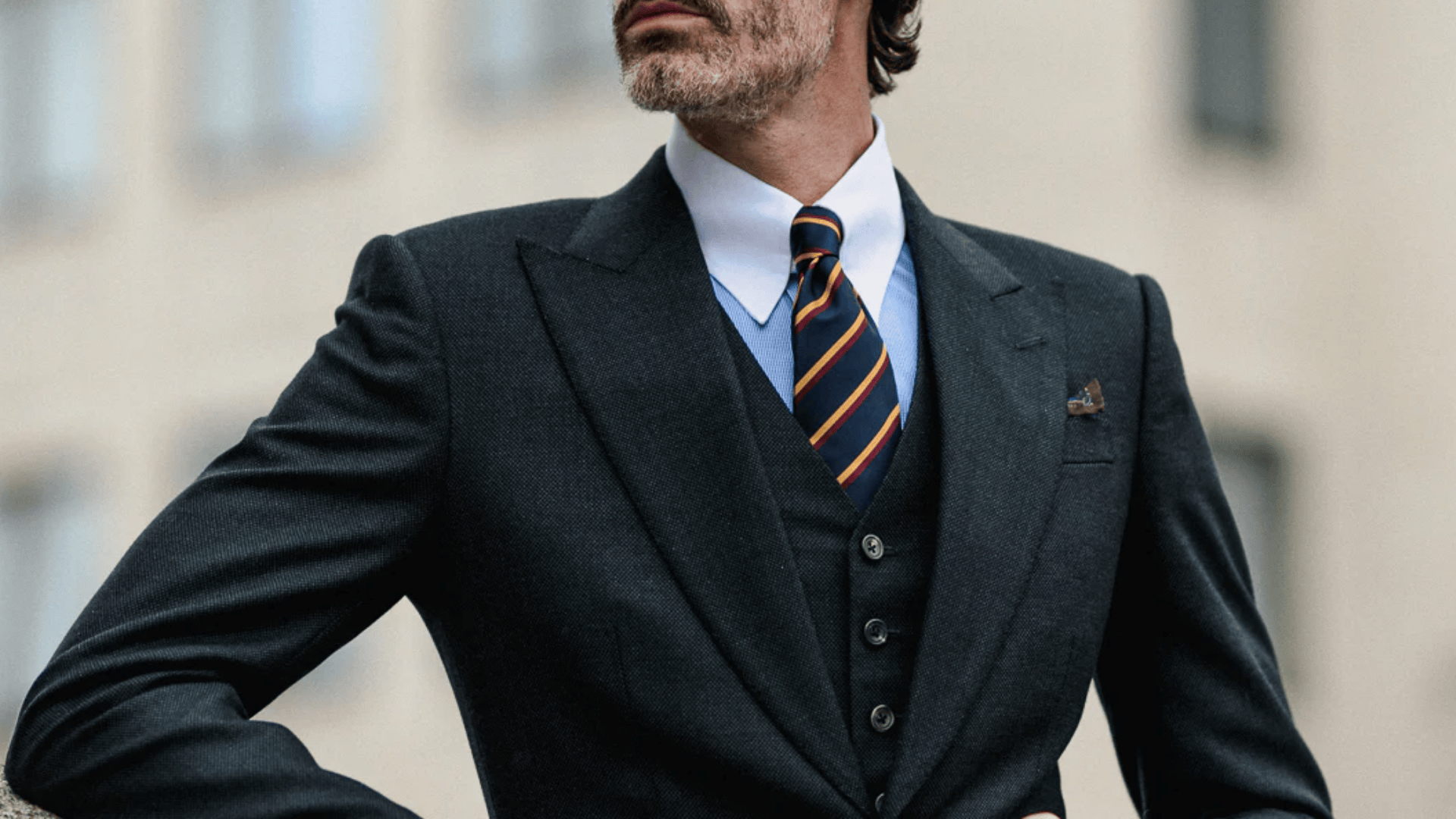
The tab collar features a small fabric strip that connects the two collar points underneath or over the tie knot. This hidden tab lifts the knot up and pulls the collar tips inward, creating a clean, raised tie look.
It’s a great choice for formal outfits where you want your tie to stand out. Tab collars pair best with medium or narrow knots and shirts with firm structure.
Styling Tip: Use a slim tie knot like the four-in-hand to keep the tab neat and sharp.
7. Pin Collar
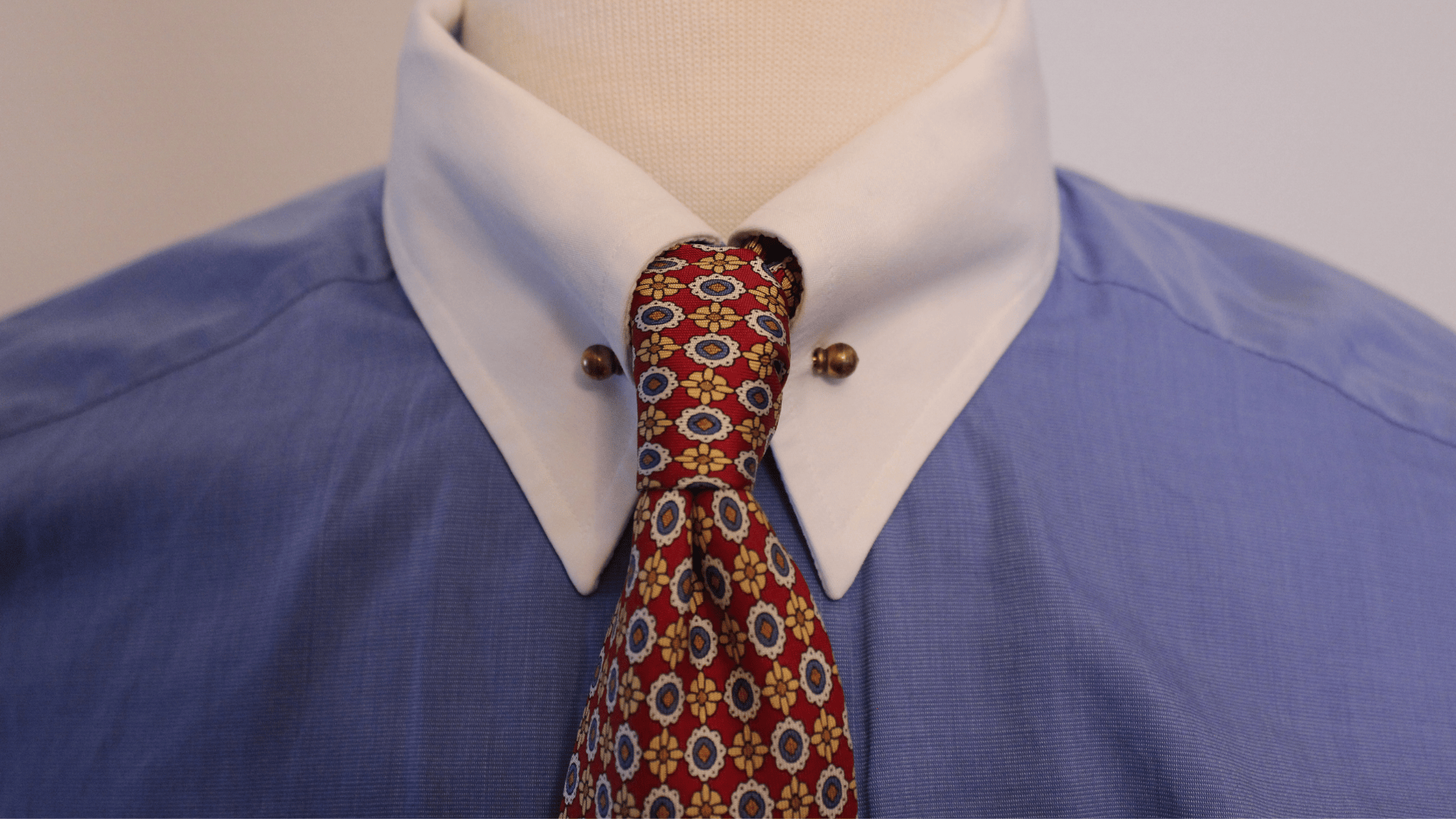
The pin collar, sometimes called an eyelet collar, has small holes on each collar point to hold a collar bar or pin. This accessory pushes the tie knot forward and slightly up, creating a vintage and refined shape.
It’s a stylish choice for dressy occasions and pairs well with formal suits. Just make sure the collar is stiff enough to hold the shape, and that the pin complements your outfit.
Styling Tip: Match the pin’s metal to your watch, belt buckle, or cufflinks.
8. Club (Rounded) Collar
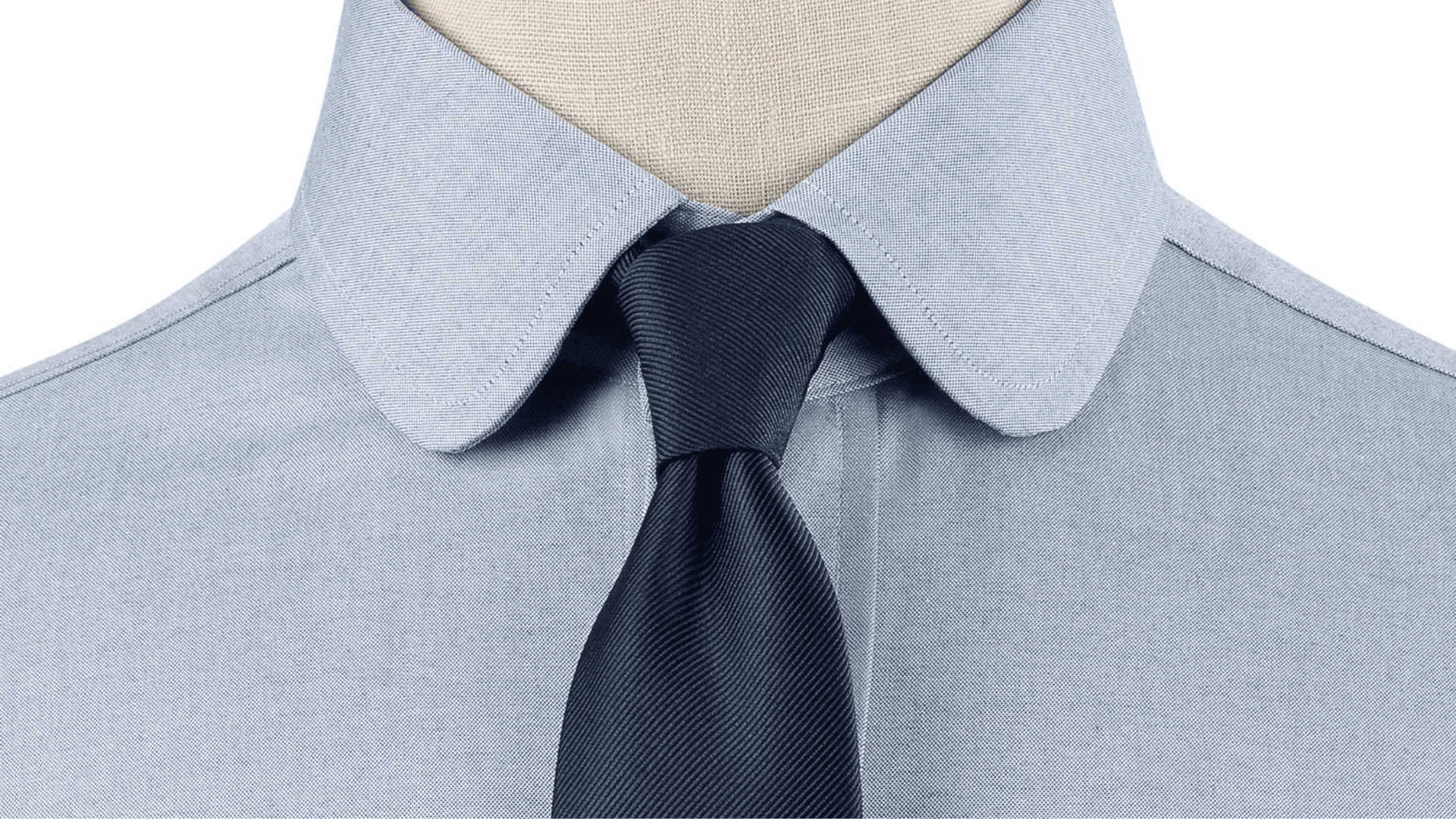
The club collar stands out with its soft, rounded tips instead of sharp points. It gives off a refined, slightly old-school vibe often seen in preppy or Ivy League style.
It’s a great choice if you want something a little different without going over the top. Club collars work best with slimmer tie knots and can be worn with or without a tie, depending on the setting.
Styling Tip: Pair with a narrow tie for a smart, vintage-inspired look.
9. Wing Collar

The wing collar is a stiff, formal collar with small, pointed flaps – called “wings” – that stand upright and sit above the tie or bow tie.
Usually seen on tuxedo shirts for formal occasions like black or white tie events, the starched collar should only be worn with a bow tie and not for daily or business wear.
Styling Tip: Always wear with a bow tie and ensure the collar is crisply starched.
10. Band Collar

The band collar is a simple, straight collar that stands up around the neck without folding over. It has no collar points or flaps, giving it a clean and collarless appearance.
This type of collar is modern and relaxed, making it a great choice for casual and semi-formal wear. It’s best worn without a tie and looks great under lightweight jackets or layered with a sweater.
Styling Tip: Leave the top button open and skip the tie for a clean, laid-back look.
11. Mandarin Collar

The Mandarin collar is a short, structured stand-up collar that doesn’t fold over, but has a slight curve at the front. It’s often seen in traditional Asian clothing, but is also popular in modern minimalist and fashion-forward designs.
It’s sleek and stylish, but not meant for ties. Wear it for semi-formal occasions or when you want a unique but subtle detail in your outfit.
Styling Tip: Style with a slim-fit blazer or kurta-style shirt for a fresh, tailored vibe.
12. Detachable/False Collar

Detachable collars are separate collars that you can remove from a shirt or attach as an accessory. Historically, they were popular because you could change collars often without washing the whole shirt.
They add a vintage or classic touch to an outfit and are sometimes used in film costumes or heritage styles. Today, they’re rare but useful for keeping your collar looking fresh.
Styling Tip: Great for avoiding stains – just swap out the collar when needed.
13. Camp Collar

The camp collar is an open, relaxed style that lies flat without a stand. It usually has a soft, wide spread and gives off a casual, breezy vibe.
This collar is perfect for summer and tropical settings, often seen on linen shirts or colorful prints. It’s great for vacations or laid-back weekends, but it isn’t meant for formal occasions.
Styling Tip: Leave the top buttons open and pair with linen or printed shirts for a relaxed look.
14. Spear Collar (Vintage/Specialty)
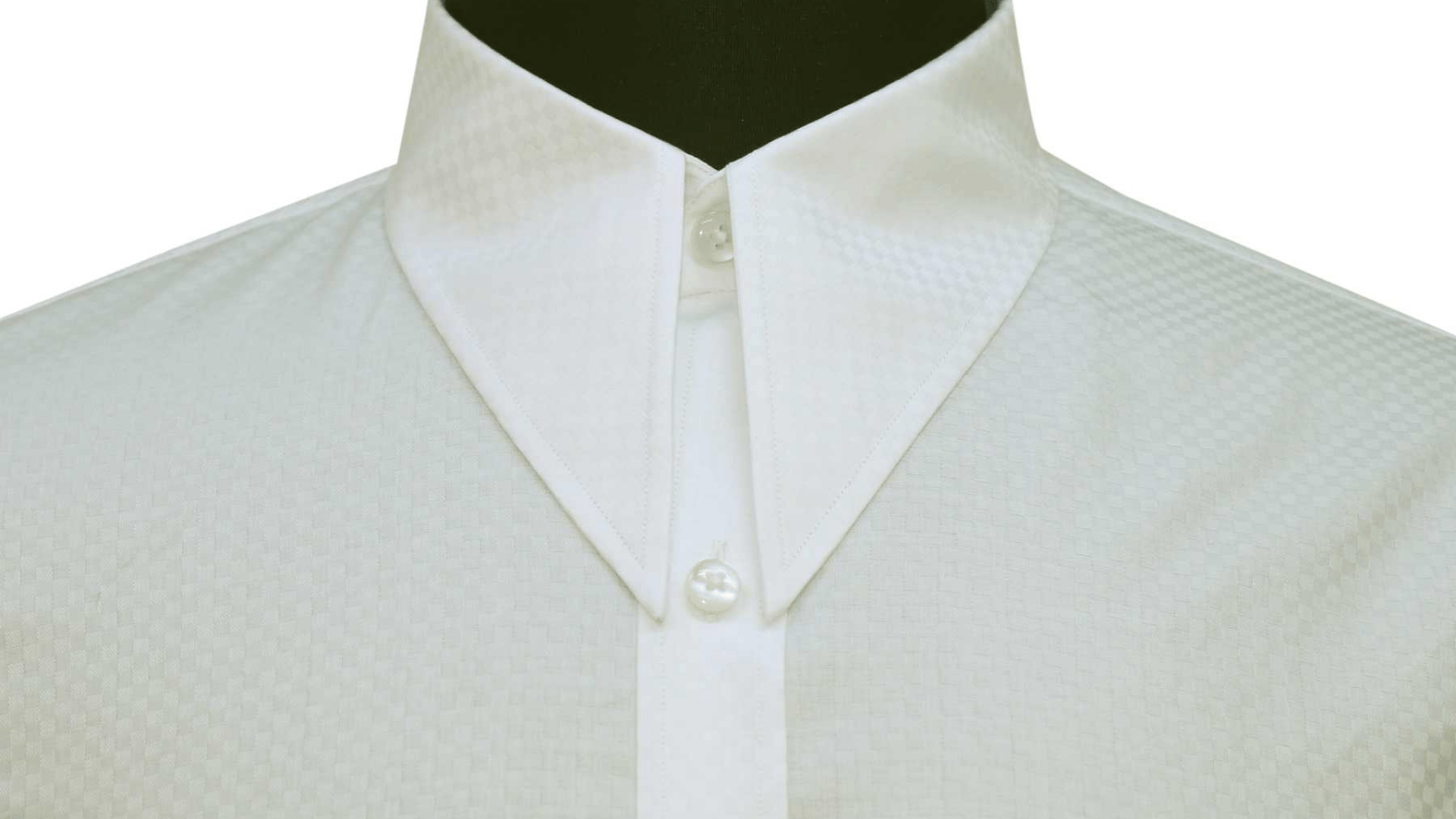
The spear collar has long, sharp, triangular points that create a bold and dramatic look. It was popular in vintage fashion, especially in the mid-20th century, and is great for retro-themed outfits.
Because it makes a statement, it’s best to keep the rest of your outfit simple so the collar can stand out without competing with other details.
Styling Tip: Pair with plain shirts or suits to keep the collar the main focus.
15. Shawl Collar

The shawl collar is a smooth, continuous, curved collar that resembles a jacket lapel more than a typical shirt collar. While it’s common on suits and jackets, some shirts or shirt-jackets use this style for a dressy but relaxed look.
It has a soft, graceful curve and works well on thicker fabrics or special eveningwear. Because it’s rare on shirts, it adds a unique touch when you want to stand out subtly.
Styling Tip: Best paired with thicker fabrics or for smart-casual evening events.
Which Collar Type Is Right for You?
Choosing the perfect collar starts with understanding your lifestyle and the features you need. Ask yourself if you wear ties regularly – this determines whether you need a collar with enough spread for larger knots.
Consider your face shape next. Round faces benefit from vertical point collars that add length, while long faces look better with wider spread collars. Think about your comfort preference, too.
Do you like structured, rigid collars that stay crisp all day, or softer, relaxed styles? Match your collar to the occasion, selecting formal options for work and casual designs for weekends.
Don’t be afraid to experiment with different spreads and styles to find what flatters you most.
Care & Structure: Keep Your Collar Sharp
A great collar loses its impact if it’s wrinkled, warped, or limp. Proper care keeps your shirt collars looking professional and polished for years.
- Use Collar Stays Properly: Insert before wearing and remove before washing.
- Iron Carefully to Avoid Warping: Press from the underside, working from points toward the center.
- Choose Starch Based on Formality: Use light starch for formal shirts, skip for casual styles.
- Replace Worn Collars: Tailors can replace damaged collars or swap styles.
- Store Shirts Properly: Hang with the top button fastened to maintain shape.
Well-maintained collars upgrade your entire wardrobe. Invest a few extra minutes in proper care, and your shirts will reward you with sharp, professional looks every time you wear them.
That’s a Wrap
Learning about shirt collar types gives you a serious style advantage in any situation. You now understand how different collars work with ties, complement face shapes, and signal formality levels.
Remember that the perfect collar balances personal comfort with occasion appropriateness, so don’t be afraid to experiment until you find your signature style.
Small details like proper care and collar stays keep your shirts looking crisp and professional for years. Ready to improve your wardrobe? Start by identifying which collar styles match your lifestyle, then build from there.
What’s your go-to collar type? Drop a comment below and share your favorite style!






